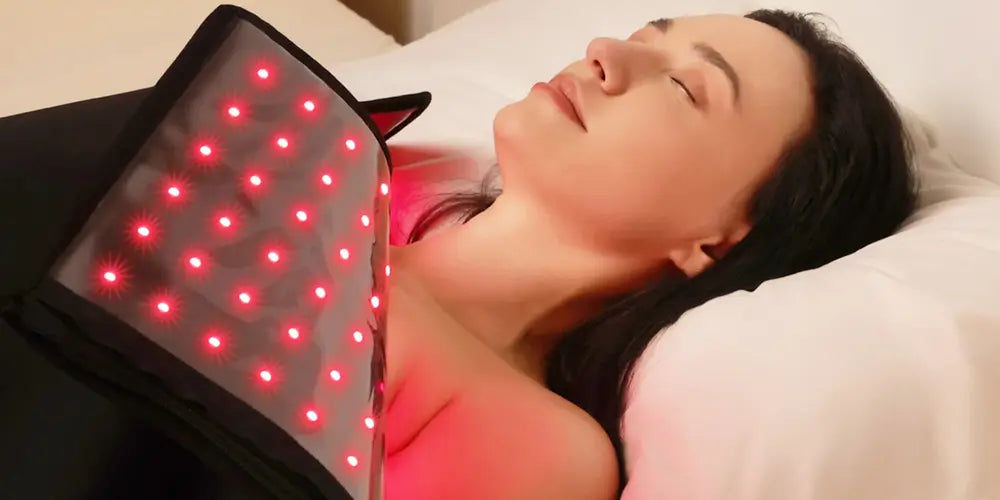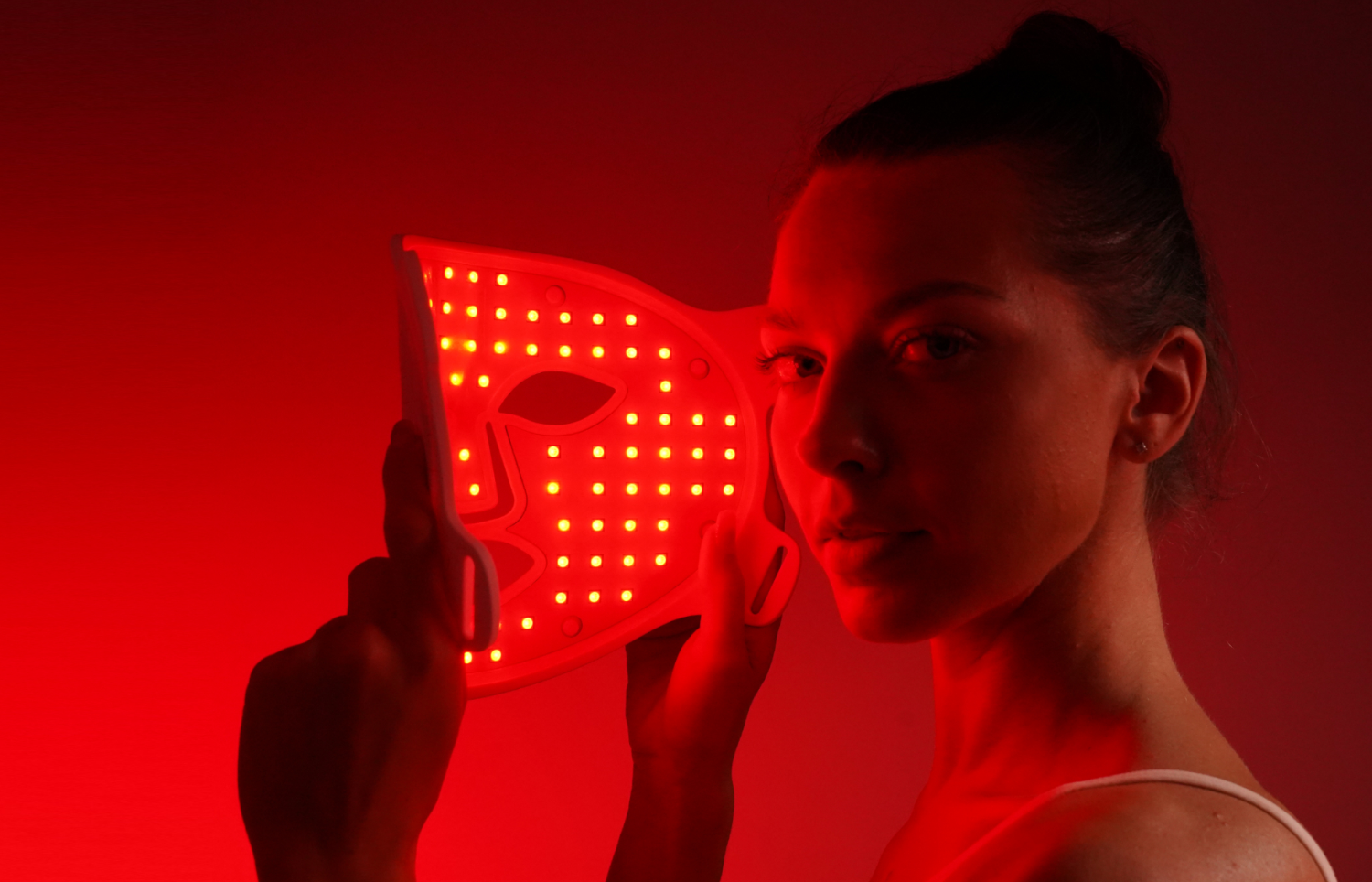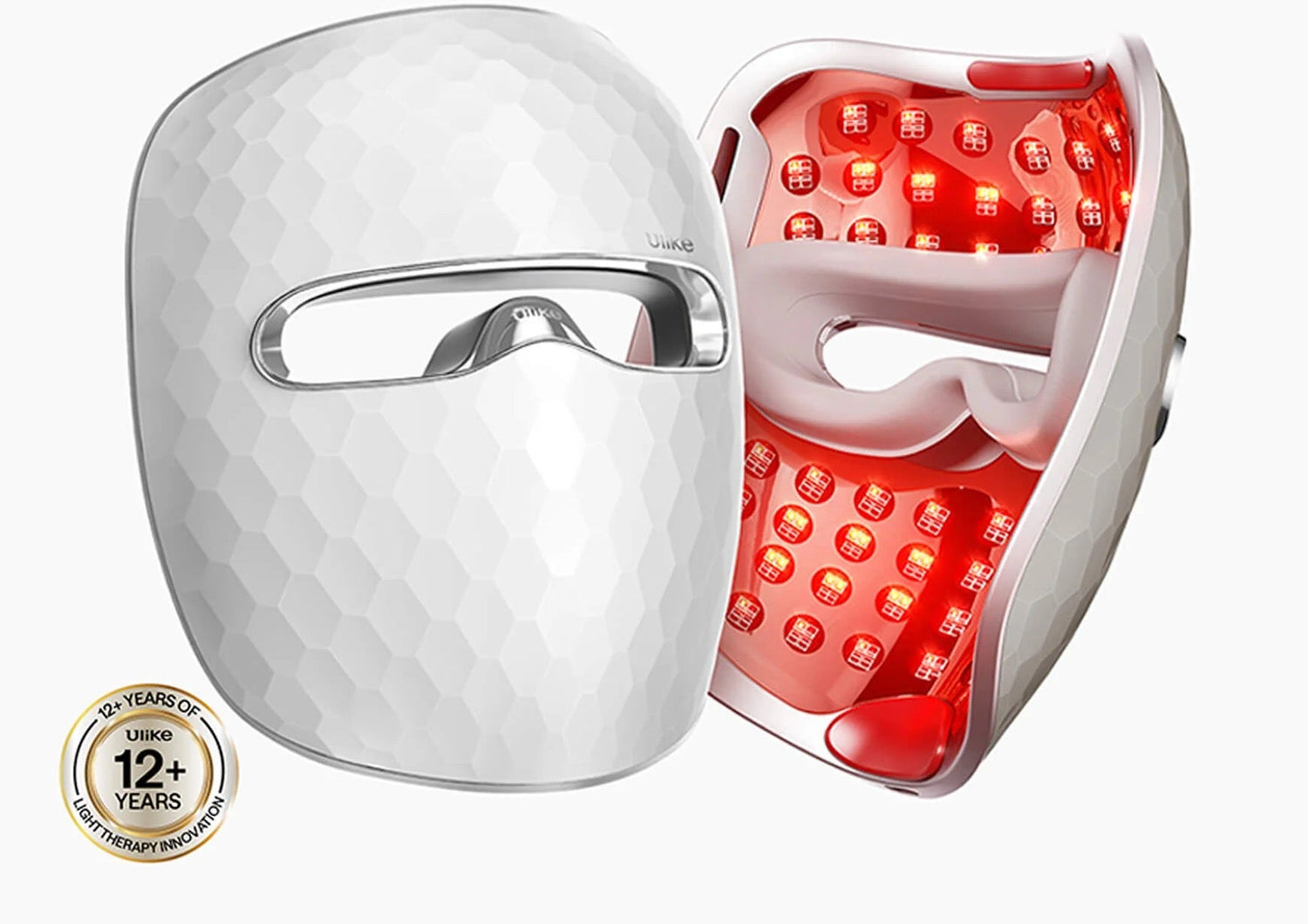
Red Light vs Infrared vs Near-Infrared: Which is Right for You?
megelinbeautyHave you ever wondered about the differences between red light, infrared, and near-infrared therapies? These innovative light-based treatments are gaining popularity for their potential health benefits. From skin rejuvenation to pain relief, each type of light therapy offers unique advantages that cater to various wellness needs. Understanding the distinctions between these therapies is crucial to choose the right one for your specific health goals.
In this article, we'll explore the science behind red light vs infrared vs near-infrared therapies. We'll delve into the visible and invisible light spectrum, examine the benefits of each therapy, and discuss their applications in areas such as acne treatment, joint pain relief, and anti-aging. By the end, you'll have a clear understanding of how these therapies differ in terms of wavelengths, penetration depth, and their effects on cellular energy and overall health. This knowledge will empower you to make an informed decision about which light therapy aligns best with your wellness journey.
Understanding the Light Spectrum
The light spectrum encompasses a range of wavelengths, each with unique properties and potential health benefits. When discussing light therapy, it's crucial to understand the distinctions between red light, near-infrared (NIR), and infrared (IR) wavelengths [1].
Red Light
Red light therapy utilizes visible light wavelengths between 630 and 660 nanometers (nm) [1] [2]. This type of light penetrates the skin to a depth of approximately 2mm, making it ideal for treating surface-level issues . Red light therapy has gained popularity for its potential to:
- Stimulate collagen production
- Improve circulation
- Reduce inflammation
- Address skin conditions such as fine lines, wrinkles, and uneven skin tone
Infrared Light
Infrared light, also known as far-infrared, has wavelengths exceeding 900 nm [1] . This type of light can penetrate several centimeters below the skin's surface, reaching deep into the body [2]. Infrared therapy is often used in infrared saunas, typically employing wavelengths around 1000 nm [4]. Interestingly, the human body perceives these longer wavelengths as heat rather than light [4].
Near-Infrared Light
Near-infrared light falls within the invisible spectrum, typically ranging from 810 to 850 nm [1] [2]. This longer wavelength allows for deeper penetration, reaching up to 5mm into the body . NIR therapy can affect:
- Muscles and joints
- Connective tissue
- Bone
- Even the brain [4]
The ability of NIR to reach deeper tissues makes it a promising option for addressing issues beyond the skin's surface.
Understanding these different light wavelengths and their penetration depths is essential for choosing the most appropriate light therapy for specific health and wellness goals.
Benefits of Red Light Therapy
Red light therapy (RLT) has gained popularity as a therapeutic technique that uses low-level wavelengths of red light to treat various conditions. This non-invasive treatment has shown promising results in several areas of health and wellness.
Skin Health
Red light therapy has demonstrated significant benefits for skin health. It works by penetrating the skin to a depth of approximately 2mm, making it ideal for addressing surface-level issues [1]. Studies have shown that RLT can:
- Stimulate collagen production, improving skin elasticity
- Reduce signs of aging, including fine lines and wrinkles
- Improve skin complexion
- Treat acne and minimize the appearance of acne scars [2]
Research indicates that red light therapy can be effective in treating psoriasis lesions and reducing the appearance of burn scars [1]. The therapy's ability to reduce inflammation and increase blood flow contributes to its effectiveness in improving overall skin health [1].
Hair Growth
Red light therapy has shown promise in promoting hair growth, particularly for individuals experiencing androgenic alopecia (male and female pattern baldness). A review of multiple studies found that red light therapy can be an effective treatment for this genetic disorder [2]. Some key findings include:
- Increased hair thickness
- Improved hair growth
- Potential to stimulate dormant hair follicles
Clinical trials have demonstrated a noticeable difference in hair growth, with an average increase of 9 to 10 hairs per centimeter squared, comparable to the results achieved with topical minoxidil 5% .
Wound Healing
Red light therapy has shown remarkable potential in accelerating wound healing and tissue repair. Studies have demonstrated that RLT can:
- Speed up the healing process for burns, wounds, and surgery incisions
- Reduce inflammation and pain associated with injuries
- Stimulate the production of new blood vessels and fibroblasts
- Increase collagen production, leading to faster and stronger healing outcomes
A 2018 review of numerous controlled trials concluded that red light therapy significantly increased tensile strength and wound contraction, resulting in more effective healing across the body . Additionally, red light therapy has been found to be particularly beneficial in treating chronic and infected wounds [4].
Red light therapy's ability to promote wound healing extends to various types of injuries and surgical procedures. For instance, patients recovering from sternum surgery experienced reduced pain, less incision bleeding, and fewer wound ruptures when treated with red light therapy .
Advantages of Near-Infrared Therapy
Near-infrared (NIR) therapy has gained significant attention for its potential to promote healing and enhance overall well-being. This innovative treatment utilizes specific wavelengths of light to penetrate deep into the body's tissues, offering a range of benefits that extend beyond surface-level effects.
Deeper Tissue Penetration
One of the primary advantages of near-infrared therapy is its ability to reach deeper layers of tissue. NIR light can penetrate 2 to 7 centimeters below the skin's surface, affecting muscles, nerves, and even bones [1]. This deep penetration allows NIR therapy to target a wider range of issues compared to other light therapies. Specifically, wavelengths between 700 and 1,000 nanometers have shown effectiveness in addressing inflammatory conditions [1].
Pain Relief
Near-infrared therapy has demonstrated remarkable potential in alleviating pain. When the body absorbs NIR light, it stimulates the production of endorphins, the body's natural painkillers [2]. This process can help reduce discomfort associated with various conditions, including arthritis, muscle strains, and joint pain [2]. Additionally, NIR therapy enhances blood circulation, delivering essential nutrients and oxygen to damaged tissues, which further contributes to pain reduction and accelerated healing [1].
Muscle Recovery
Athletes and fitness enthusiasts can benefit significantly from near-infrared therapy's ability to enhance muscle recovery. NIR light stimulates the mitochondria, the powerhouses of cells, to produce more adenosine triphosphate (ATP) [1]. This increase in cellular energy allows muscles to work more efficiently, repair damage faster, and regenerate more effectively [1]. Studies have shown that NIR therapy can improve muscle performance, reduce fatigue, and accelerate recovery after intense exercise.
Choosing the Right Light Therapy for You
Selecting the appropriate light therapy depends on individual health goals and specific concerns. Understanding the different types of light therapy and their benefits can help in making an informed decision.
Skin Concerns
For those focusing on skin health, red light therapy has shown promising results. This therapy uses visible light wavelengths between 630 and 660 nanometers, penetrating about 2mm into the skin [1]. Red light therapy has demonstrated effectiveness in:
- Stimulating collagen production
- Reducing signs of aging, including fine lines and wrinkles
- Improving skin complexion
- Treating acne and minimizing acne scars [2]
Additionally, red light therapy has shown potential in treating psoriasis lesions and reducing the appearance of burn scars [1]. For those dealing with hair loss, particularly androgenic alopecia, red light therapy has demonstrated an average increase of 9 to 10 hairs per centimeter squared in clinical trials .
Pain Management
For individuals seeking pain relief and deeper tissue treatment, near-infrared (NIR) therapy may be more suitable. NIR light, with wavelengths typically ranging from 810 to 850 nm, can penetrate up to 5mm into the body [1] . This deeper penetration allows NIR therapy to target:
- Muscles and joints
- Connective tissue
- Bone
- Even the brain [4]
NIR therapy has shown potential in alleviating pain associated with various conditions, including arthritis, muscle strains, and joint pain [2]. It works by stimulating the production of endorphins and enhancing blood circulation, which can contribute to pain reduction and accelerated healing [1].
Overall Health Goals
When considering overall health goals, it's important to understand the different effects of various light therapies:
- Blue light therapy (400-480 nm) can help regulate sleep patterns, improve mood, and increase cognitive performance .
- Green light (in the visible spectrum) can have a calming effect, even out complexion, and help lighten hyperpigmentation spots [4].
- Yellow light can reduce melanin production, alleviate redness from inflammation, and stimulate the lymphatic system [4].
- White light can accelerate growth and healing of skin cells, enhance nutrient absorption, and help treat wounds, acne, and wrinkles [4].
For those seeking a comprehensive approach, devices that offer both red and infrared light wavelengths provide the flexibility to address various concerns [4]. It's crucial to consider factors such as the intensity of the light, treatment duration, and frequency of sessions when choosing a light therapy device [4].
Conclusion
Light therapy has emerged as a groundbreaking approach to health and wellness, offering a range of benefits for various conditions. Red light, near-infrared, and infrared therapies each have unique advantages, catering to different needs from skin rejuvenation to deep tissue healing. The choice between these therapies depends on individual goals, with red light excelling in skin health, near-infrared providing deeper penetration for pain relief and muscle recovery, and infrared offering the deepest reach for overall wellness.
As research in this field continues to grow, light therapy is poised to play an increasingly important role in both medical treatments and personal wellness routines. Whether you're looking to improve skin appearance, manage pain, or enhance overall health, there's likely a light therapy option that can help. To get the most out of these treatments, it's crucial to consider factors like wavelength, intensity, and treatment frequency, and to consult with a healthcare professional to create a tailored approach that aligns with your specific health objectives.
FAQs
1. Should I opt for red light therapy or near-infrared therapy?
Both red light therapy and near-infrared therapy are effective for reducing inflammation. Red light therapy enhances circulation and alleviates skin inflammation, while near-infrared therapy penetrates deeper, aiding in the treatment of deeper musculoskeletal issues.
2. Which is more beneficial for health, near or far infrared?
Near infrared therapy is beneficial for improving the surface of the skin, but far infrared goes deeper, helping to eliminate harmful toxins from the body. For overall detoxification, far infrared is generally considered more effective.
3. Is far infrared superior to other forms of infrared light therapy?
Both far and near infrared therapies are effective and provide a deeply relaxing experience. The choice between them should be based on your specific health goals and conditions. Near infrared is often recommended for its broad health benefits unless there are specific conditions like heart issues or arthritis, where far infrared might provide more targeted relief.
4. Can red light and near-infrared (NIR) therapies be used simultaneously?
Absolutely! It is possible to use both therapies either independently or together. For maximum benefits, using both red and NIR light simultaneously during treatments is recommended, as they both enhance cellular function and are part of the natural light spectrum.
References
[1] - https://my.clevelandclinic.org/health/treatments/22146-led-light-therapy
[2] - https://www.anikabeauty.com/blogs/premium-skincare/a-guide-to-led-light-therapy-colors
[3] - https://www.degreewellness.com/2019/06/the-difference-between-light-therapy-and-near-infrared-therapy/
[4] - https://kineon.io/blogs/news/red-light-therapy-vs-near-infrared-vs-infrared?srsltid=AfmBOopyvELd8XR6rg_JSE-zaVv7CgBFotFXjtRvVTa8msHb9xveH8SD











